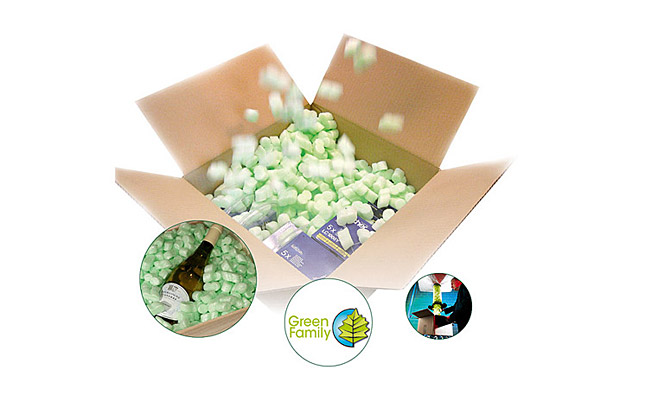Great Moments in Packaging No 8: Polystyrene

Polystyrene is so much a part of modern life, in the form of such diverse objects as cd cases, loose fill packing peanuts and insulated coffee cups, for example, that it comes as a bit of a surprise when you find out that it took the best part of a hundred years between someone discovering it and someone actually coming up with a use for it.
Like polythene, polystyrene was first discovered (as far as we will ever know) by a German who was trying to do something else entirely and had no idea at the time just what he had achieved. This time, our accidental hero is a Berlin apothecary named Eduard Simon, who in 1839 was trying to separate the components of storax, the resin of the Turkish sweetgum tree. Storax is much used in perfumes, partly because of its smell, and partly because it works as a fixative – ie its presence means the perfume keeps its scent for longer.
The chemistry bit
One of the things Simon distilled that day was an oily substance which he put in a bottle, called styrol, and then put to one side. A few days later he noticed that, instead of an oily substance, he now had a hard translucent mass. He assumed, wrongly, that this was the result of oxidisation, and named his new material styrol oxide, or Styroloxyd.
By 1845, one August Wilhem Hofmann had demonstrated that styrol thickened with or without the assistance of oxygen, at which point styrol oxide became meta styrol.
In 1863, French chemist Marcellin Berthelot delivered a landmark lecture, in which he suggested that small molecules could join together to form large molecules, or ‘polymers’. Three years later he applied his theory to the mystery of meta styrol and (correctly) suggested that what was going on was a process of polymerisation, ie that Simon’s oily substance had linked together to form a chain.
Yes, but what do we do with it now?
Which was all well and good, and very clever, but for a long time nothing worthwhile came of all this – outside of the world of theoretical chemistry – because no one could find a practical application for the stuff. It was too brittle and too given to cracking to be of much use.
In fact, it wasn’t until the 1930s that any further worthwhile progress was made, when German scientists working for I G Farben discovered polystyrene – as it was now being called – could be cast into pretty much any shape they wanted by pouring the molten substance into moulds. They also found they could extrude polystyrene sheets or film.
In 1939, the Dow Chemical Company solved the brittle problem by devising a way of removing impurities from the polymer and two years later developed the expanded foam version they called Styrofoam.
Since then, polystyrene hasn’t looked back and today it is used make everything from disposable razors to computer housing. As a packaging material it is, of course, phenomenally useful. One of the most common uses is as packing peanuts, or void fill, used to stop products moving about when packed in cardboard boxes. But its moldability makes it perfect for all kinds of protective packaging, and in its expanded form, washing machines and flat-pack furniture are just two of the items likely to arrive safe and undamaged at your home thanks to its tender mercies.
Dave Smith
Latest posts by Dave Smith (see all)
- An environmental guide to plastic carrier bags - 22nd June 2015
- Millimetres and litres: a guide to choosing the right sized box - 11th June 2015
- The Davpack Christmas Sale – There’s More! - 12th November 2014
